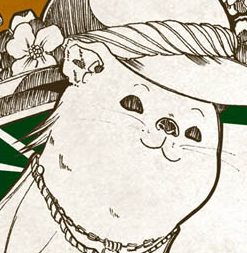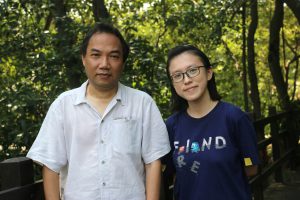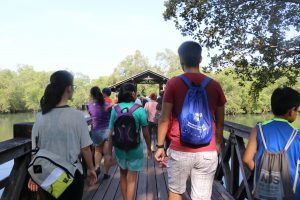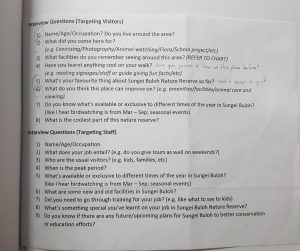
Introduction to Project 2: Locale (Sungei Buloh Nature Reserve)
I’m incredibly excited and terrified to work on Project 2! I’m worried that my location and research wouldn’t translate to a fun zine, but yet at the same time I’m really hyped about getting to finally work on something outside school and home!
Initially, I picked Little Guilin and did some secondary research on the area but it was alot about rocks, rocks and more rocks. It was a quarry in the past but the actual area of Little Guilin is apparently quite small (I would have loved to do the other abandoned quarries as well if the Little Guilin area included Gammon, Seng Chew, Lian Hup and Poh Hin!). It’s not the only quarry there and it seems that the only big thing it has going for it is how it looks like a little piece of Guilin in China. There are areas that are taped off from the public due to landslides as well in the more recent years, so the trail is short as well. I talked to my friends and my family about the area as well, since they know people living in Bukit Batok and Guilin View, and decided to change my location. It’s a pity since I thought the place was also really cool since it was like a little escape to China but in Bukit Batok heartland, less popular than places like Bukit Batok Nature Reserve.
But that aside, I changed my pick of location to Sungei Buloh Nature Reserve during recess week so that I could change to work on living subjects! I can’t remember if I’ve gone there as a kid, but since I LOVED science, animals and nature trails, I was so much more excited about this than when I was working on Little Guilin.
Quick Jump (Content Section)
The post is really long! Press Ctrl+F (Windows) or Cmd+F (Mac) to do a quick jump to the different sections:
1) First Impressions – SBWR1
2) Secondary Research – SBWR2
3) Primary Research Day 1 – SBWR3
4) Primary Research Day 2 – SBWR4
5) Highlights & Snapshots (Photos) – SBWR4.1
6) Interviews, Observation Research & Surveys – SBWR4.2
7) References – SBWR5
First Impressions (SBWR1)
The first time I went to Sungei Buloh Nature Reserve, I expected lots of mud and crocodiles but I think I left having quite a different impression of the place now, and am learning a whole bunch more!
I’ve never taken a bus in Kranji and the bus stop is an absolute nightmare.
“Why are there 3 sections at 1 bus stop?”
“Does 925 exist or is it a myth.”
“No uncle I’m not here to go to Malaysia.”
“Total ride is 12 stops. Cool.”

“Got 3 stops left, I’ll stop at the innermost one and walk in.”

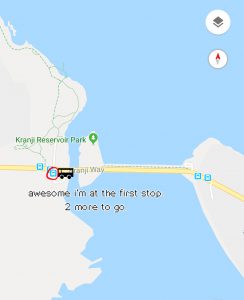


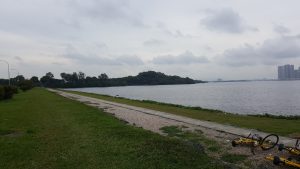 “Wow beautiful flyover sia.”
“Wow beautiful flyover sia.”
“There’s only a car path.”
“How to walk.”
“Will I get run over first or walk to death.”
“Many bikes that I can’t cycle.”
“The two other bus stops will forever remain a mystery.”
Secondary Research (SBWR2)
So why is Sungei Buloh worth it? I did my secondary research first:
1) What exactly is Sungei Buloh?
• As a mangrove and mudflat, it’s unique to countries that sit smack near/on the Equator like Singapore.
• It is one of the only 2 mangrove/mudflat in Singapore, other than Pasir Ris Park. Sungei Buloh Nature Reserve places an emphasis on preserving and educating. Pasir Ris Park places emphasis on recreational and family activities. (different amenities e.g. BBQ)
• Sungei Buloh Nature Reserve is also recognized as an international migratory site for birds.
2) Unique Timeline & Activities
• Birdwatching (Between September to March)
• …to find out more on my primary research!
3) Friendly Educational Amenities & Facilities
• Viewing Pods
• Visitor Centre
• Boardwalks (Mangrove, Coastal, etc)
• Junior Adventure Trail
• Mid Canopy Walk
• Public Toilets (Placed in places who want to have visitors; or for kids actually)
• Information Boards
4) Organized Activities & Resources
• Brochures
• Official Nparks website
• Live Camera on Nparks site to watch animals (e.g. Otters, Grey Heron, Civet Cat and more)
• E-newsletters
• Sungei Buloh Activity Worksheets (for Primary/Secondary school students)
• Organized Walks
• Bird-viewing sessions by Singapore Bird Group
Organized Walks by Nparks: (8 activities span of 1 month, all weekends only)
• What’s in my sky? (Guided walk for native birds and migratory birds) (31 Mar, 17 Mar)
• What’s in my mud? (Guided walk featuring our lesser known creatures of the mudflats) (24 Mar, 7 Apr)
• What’s in my water? (Guided walk along water edges to learn about water life) (14 Apr)
• Paint Along Session (Learning different drawing techniques at Sungei Buloh) (25 Mar)
• Fish and prawn harvesting demonstration (24 Mar)
Guided walk (In Mandarin) (24 Mar)
Note: Private guides are also available for hire. Emails for guides are provided on NParks website.
Primary Research
Trip #1 Journal (SBWR3)
8th March, Thursday // 3PM – 6PM // Rainy Weather
• 3.15PM: Entered the nature reserve. It smells slightly damp but there’s alot of fresh air in the open area.

I’ve met the cutest mascot in all of mascot history.
I’ve been waiting all day for something to come out but I only hear aliens.
• 3.35PM: Visited the air-conditioned Visitor’s Centre and also a small, air-conditioned booth beside the Visitor’s Centre that had preserved animals in jars and a staff. The Visitor’s Centre is not tended. Both facilities were in pristine condition!
• 3.50PM: Left for Coastal Trail.
 • 4.49PM: Smells really damp, nutty and like mushrooms during my walk over the Mid Canopy Walk. The bridge is very jiggly but really strong.
• 4.49PM: Smells really damp, nutty and like mushrooms during my walk over the Mid Canopy Walk. The bridge is very jiggly but really strong.
•5.15PM: Walked around 1.5km so far, back and forth the Mid-Canopy walk and the start of the Coastal Trail to get photos.
At this point, I can’t hear much anymore because my ears are clogged from the hike. I started recording some videos instead.
I saw some gorgeous herons flying over the waters at Coastal Trail but they ducked behind some trees and I couldn’t get a photo. 🙁
5 gorgeous plants and 1 creepy one that I don’t want to be around for too long.
• 5.30PM: Started drizzling so I started turning back towards the entrance. Surprisingly, not much rain got onto me because of the tall trees arching over the path.

• 6.15PM: Saw a wild boar family of 2-3 having dinner near the entrance/bus-stop of Sungei Buloh. What a great way to end the hike!
I’m actually surprised I saw some boars and birds! I wasn’t expecting much at all since I’ve been to a couple of other nature parks/reserves in Japan and Malaysia – animals hide away during rainy weather. Thank you, animal friends. 🙂
Also:
They lied to me. I never saw a single crocodile.
Trip #2 Journal (SBWR4)
17th March, Saturday // 8.00AM – 3PM // Sunny Weather
Since I didn’t cover much ground on the first day and didn’t get my interviews and polls yet, I decided to go for a second day on a Saturday – so that I can sign myself up for one of these weekend walks and pull a friend from WKW along to get healthy together.
Thankfully, I managed to score myself a spot for the walk! (Registration was full and closed on the 10th.)
I made a phonecall immediately to ask for permission for an interview but apparently the guided walks are run by volunteers! I couldn’t get their number to ask for permission since due to privacy issues, and the staff advised that I asked on the day itself.
Onward to my 2nd trip to Sungei Buloh Nature Reserve! This time, I brought a friend along and we took 925 directly from Choa Chu Kang at around 7.20AM.
What better way to spend a nice Saturday morning than trekking with a friend? 😀
• 8.00AM: Entered the nature reserve from the New Visitor’s Centre and had a quick breakfast with friend.
• 8.30AM: Slow walk to the meeting location. Took photos, talked to people and encountered many elderly from North West Brisk Walking Club.
So many aunties and uncles; I felt like a salmon swimming upstream. (- ω -、)
If you’re looking for crazy big bugs, there’s a spider the size of your hand right here in Sungei Buloh. It’s called the Golden Orb Spider and they make their webs really low. I’m glad I’m born short.
• 9.30AM: Started ‘What’s in my sky’ bird-watching walk with my group. Our guide is Mr. Azmi Mohamed, a volunteer. (Participant Observation)
Thank you for the wonderful insight, Mr. Azmi! 🙂
• 10.30AM/11.00AM: Conducted interviews with my guide and guided walk participants. Also observed demographics and activities along the way as Saturday, 10.30AM is the peak period for visitors- according to my guide.
The return of the danger croc signs.
Also, I do notice some clear differences in sights and sounds at different points of day/year:
-Best time for watching birds is at 7.30AM (Info from Mr. Azmi)
-Frogs are most frequent before/after rain; can hear them at the pond near the New Visitation Centre
-Crocodiles are most visible/frequent during low tide. They are still there at high tide but are less visible. Look twice at a piece of driftwood – it might be a croc!
• 1.00PM: Interviews with visitors, exploring the rest of the nature reserve and water breaks
• 3.00PM: Left the nature reserve.
At this point, I think it really hit me how much our locals care for our own landscape. This inspired me as well to see this beyond just an info-graphics/zine project. The care the staff had for what they were doing really made me really care for the location I’ve chosen as well. I started wanting to think about the different ways that would make others care for my location as well, and will be doing my best to incorporate my findings and feelings into my info-graphics.
Highlights & Snapshots (SBWR4.1)
Golden Orb Spider on the path near the entrance
Bats sleeping under a roof
(You can find them by looking for droppings on floors under roofs!)
Watching the different types of egrets during ‘What’s in my sky’ guided walk
Spot the croc! (I didn’t notice the crocodile was there til I went through my photos ;u;)
A view of Malaysia from the nature reserve!

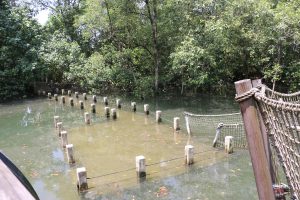

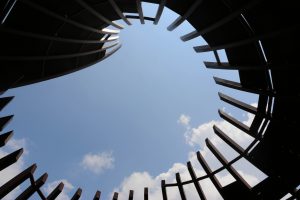
 Map of the migratory path of birds
Map of the migratory path of birds
Interviews & Surveys (SBWR4.2)
Interviews with visitors (and volunteer) at SBWR:
The following are the interview questions that I drafted out before I went on my second trip to Sungei Buloh.
During the interviews, I decided to cut it down to 4 questions (circled in the above image) and occassionally sneak in additional questions if I manage to get them into a talking mood. I had two sets of questions – one for visitors and one for the staff.
Unfortunately, I was only able to use the second set of questions for Mr. Azmi since he was a volunteer. I went to the staff at the Visitor’s Center and they informed me that while they had received my email and call earlier in the week, but they needed alot more time to request for permission for any sort of interview. Fortunately, I managed to get insight from a volunteer and he offered to help connect me to the Deputy Director as well – which was extremely nice of him! (;-;)
Onwards to interview/soundbites!
A Volunteer’s Insight:
(I recorded the sound as well with my phone!)
Some interviews with visitors:
My chinese cannot (;-;) I’m glad to have a friend… even though our 中文不行….
It’s… alot of feet.
I decided to interview some of them in groups of 2-4 as well so that they wouldn’t run away – alot of them came to Sungei Buloh for some peace and quiet, so they wanted to remain anonymous. They were mostly receptive to a voice interview but wouldn’t agree to a video one.
Thanks to the people at Sungei Buloh for the interviews! 🙂
E-Interview with Deputy Director of SBWR:
I’ve managed to get an e-interview with Yang Shufen, Deputy Director of Sungei Buloh Wetland Reserve as well after my trip to the wetland reserve. After interviewing/chatting with visitors of the nature reserve, it’s a very interesting insight! The following is the e-interview:
Others
• Link to Project 2 Part 1 Infographic Designs (Presentation): https://oss.adm.ntu.edu.sg/laum0005/graphic-form-project-2-locale-2/
References & Sources (SBWR5)
• A Thai Visitor at Sungei Buloh Wetland Reserve: https://www.nparks.gov.sg/mygreenspace/issue-03-vol-3-2009/conservation/a-thai-visitor-at-sungei-buloh-wetland-reserve
• Little Day Out: https://www.littledayout.com/2017/04/04/5-essentials-sungei-buloh-wetland-reserve-tidal-ponds/
• Nparks (Register for tours, flora and fauna web, newsletters & other resources): https://www.nparks.gov.sg/
• Launch of wireless learning (2007): https://www.nparks.gov.sg/news/2007/8/nparks-launches-wireless-learning-trail–sungei-buloh-wetland-reserve-first-of-its-kind-in-the-region
• EcologyAsia: http://www.ecologyasia.com/html-loc/sungei-buloh.htm
• Primary School MOE Walks: http://woodlandspri.moe.edu.sg/wp-content/uploads/2017/05/58-2017-Field-Trip-To-Sungei-Buloh-Wetland-Reserve.pdf
• History of Sungei Buloh: http://eresources.nlb.gov.sg/infopedia/articles/SIP_566_2005-02-01.html
• Saving Sungei Buloh: http://www.straitstimes.com/singapore/saving-sungei-buloh
• Otters mobbing a crocodile: https://mothership.sg/2017/03/close-up-video-show-otters-confronting-crocodile-at-sungei-buloh-by-mobbing-it/
• Nature Society (Birdwatching on 15 April): https://www.nss.org.sg/events.aspx?id=qpwm84I9MYI=&group_id=yclleUod3WM=
